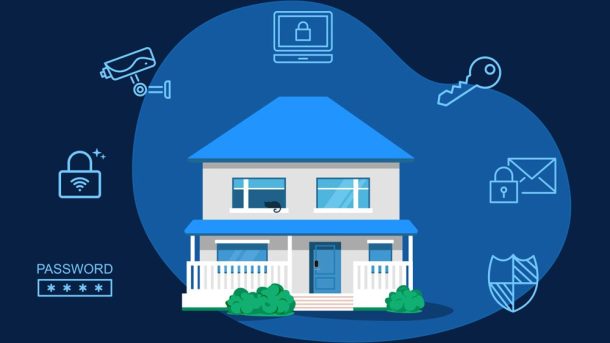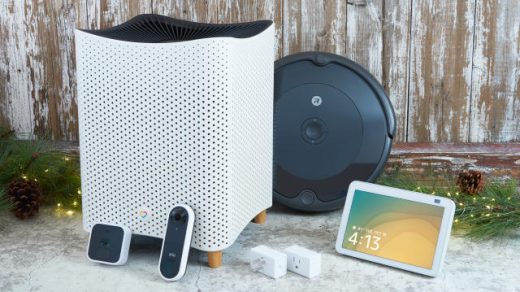Smart homes offer unparalleled convenience, allowing you to control lighting, security, appliances and more with just a tap or voice command. However, as homes get “smarter,” the question of security becomes increasingly critical. With every connected device—whether it’s a smart lock, camera, thermostat, or voice assistant—comes a potential vulnerability. So, just how safe are your connected devices? In this article, we explore the risks and provide practical tips for securing your smart home.
The Appeal and Risks of Smart Homes
Smart home devices are designed to make life easier. You can unlock your door from your phone, monitor your home from anywhere in the world or tell your smart speaker to dim the lights—all without getting off the couch. However, this convenience also comes with risks. Any device connected to the internet is vulnerable to hacking and smart home gadgets are no exception.
The danger lies in the fact that many smart devices collect personal data, such as your daily habits, schedules and even voice recordings. Without proper security measures, these connected devices can expose you to cyberattacks, unauthorized access and privacy breaches.

Key Smart Home Security Risks
Before we delve into how to secure your smart home, it’s important to understand the main risks associated with connected devices:
1. Device Hacking
Hackers target smart home devices because they are often less secure than traditional computers and smartphones. Common targets include smart locks, cameras and even thermostats. If a hacker gains control of your device, they could unlock your door, disable your security system or access video feeds from your cameras.
2. Data Privacy Concerns
Many smart home devices collect and store personal data in the cloud. This could include everything from your voice commands to video footage from your security cameras. If these data storage systems are compromised, your private information could fall into the wrong hands.
3. Weak Passwords and Unsecured Networks
Smart home devices are often set up with default passwords, which are easy to guess or find online. Additionally, if your home Wi-Fi network isn’t properly secured, hackers can exploit this to gain access to your connected devices.
4. Unpatched Software
Manufacturers frequently release software updates to fix bugs or improve security, but if you don’t update your devices regularly, they can become vulnerable to known exploits. Unpatched software is one of the easiest ways for hackers to break into your smart home system.
5. Third-Party Integrations
Many smart home systems rely on third-party apps to function. However, these third-party services might not have the same security standards as the device manufacturer, creating another layer of vulnerability.

How to Secure Your Smart Home
Now that you’re aware of the potential risks, let’s dive into ways to secure your smart home devices and protect your privacy.
1. Start with a Secure Wi-Fi Network
Your home Wi-Fi is the gateway to your smart devices. If your network is compromised, all connected devices are at risk. Here’s how to secure it:
- Use a strong password: Replace default passwords with a complex one that includes letters, numbers and symbols.
- Enable WPA3 encryption: If available, ensure your router uses the latest Wi-Fi encryption standard, WPA3, to safeguard your data.
- Set up a guest network: Keep your smart devices on a separate network from your personal devices like computers and smartphones to reduce risk.
2. Change Default Passwords Immediately
The default passwords for many smart devices are publicly available, making them easy targets for hackers. Always create a strong, unique password for each device. Consider using a password manager to keep track of them.
3. Enable Two-Factor Authentication (2FA)
If your smart home app or device supports two-factor authentication (2FA), enable it. This adds an extra layer of security by requiring both your password and a secondary form of authentication, such as a code sent to your phone.
4. Update Device Firmware Regularly
Manufacturers release firmware updates to patch vulnerabilities and improve security. Check for updates regularly through the device’s app or website and apply them as soon as they are available.
5. Use a Secure Smart Home Hub
Many smart home systems connect devices through a hub, such as Amazon Echo, Google Nest, or Apple HomeKit. While these hubs make life easier, they are also a potential security weak point. Choose a hub from a reputable manufacturer that regularly updates its security protocols.
6. Limit Data Sharing and Cloud Storage
Many smart devices upload data to cloud servers for storage, but not all offer strong encryption. To minimize risks:
- Review privacy settings: Disable unnecessary data collection and sharing features in the device’s app.
- Opt for local storage: If possible, choose devices that store data locally (such as on an SD card) rather than in the cloud.
7. Monitor Your Devices Regularly
Check your devices’ usage logs and settings periodically to ensure nothing unusual has occurred. Some devices offer activity logs that show when the device was accessed, helping you spot any unauthorized activity.
8. Be Cautious with Third-Party Apps
Before installing third-party apps that integrate with your smart devices, research their security practices and reviews. Stick to trusted apps from reputable developers to avoid introducing vulnerabilities.
The Future of Smart Home Security
As smart homes become more popular, manufacturers are continuously working to improve security protocols. Expect to see more devices featuring built-in encryption, stronger authentication methods and regular security updates. Additionally – the industry is moving toward adopting universal security standards, which will make it easier for consumers to assess the safety of their smart home products.
While manufacturers are stepping up their security game, it’s essential for users to stay proactive as well. By taking the steps outlined above, you can significantly reduce the risks and enjoy the convenience of your smart home without compromising your privacy or safety.
Conclusion: Stay Safe, Stay Smart
The benefits of smart home technology are clear—convenience, automation and improved control over your living space. However, these connected devices come with risks that can’t be ignored. By following simple but effective security practices, such as securing your Wi-Fi, using strong passwords and updating your devices, you can enjoy the perks of a smart home while keeping your personal information and property safe from cyber threats.



